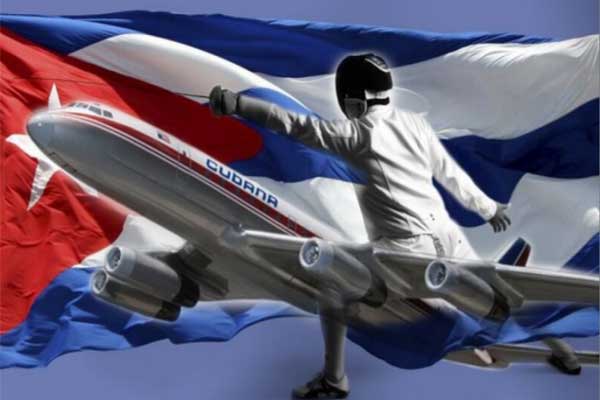
Uncertainty gave way to certainty, and then to eternal pain; to the longing to see them arrive as they had dreamed, on October 6, 1976, when reality abruptly broke.
"What would they think, what would they feel in that moment when they saw death face to face? That is the most painful memory I have," said Adys González, sister of flight attendant Marlene González, in the documentary The True Story of Flight 455.
For the relatives of the victims of the terrorist attack in Barbados, there is no forgetting, but rather remembering their smiles, their hugs, their projects, and their yearning to live. Nearly five decades have passed and the wound remains intact, painfully etched into the bowels of an entire people.
"Do you know what it's like to wait for a person and then suddenly be told that is not coming? I still love him, you never forget that," said Virgen Verdecia Sánchez, who lost her husband, in an interview a few years ago.
Seventy-three people were murdered that tragic day, at 12:23 p.m., when the first bomb exploded on the Cubana de Aviación DC-8, nine minutes after takeoff from the Seawel International Airport, in Barbados. For the material and intellectual authors of the crime, justice never came, and the victims were not only killed on the flight but also their families, broken by an impact more powerful than that of the explosives inside the plane.
"Today, as on the first day, I always think of her, I, my wife... But what are we going to do? Twenty or 30 years of arranging flowers..." expressed José María Uranga, father of the foilist Nancy Uranga Romagoza, many years later, remembering his daughter, who was pregnant at the time of her death and could not see her wedding photos. Some pains never end, do not subside, and remain with you until the end of time.
In Las Tunas, the pain of barbarism was felt firsthand. Two of these young fencers were born here. Leonardo MacKenzie Grant was just 22 years old and had a growing international reputation; in the Mártires de Barbados Museum, trophies, plaques, letters of recommendation, the identity card, a certificate of military service, key chains... several objects reveal details of his short and promising life. Carlos Leyva González, who was only 19 years old, lived on the site where this memorial to the victims of terrorism stands today. His family was devastated by the tragedy.
With a certain mysticism, Iraida Malberti, dedicated to artistic work since her childhood, mother of Carlos Alberto “Tin” Cremata, and wife -beyond the absence of Carlos Cremata Trujillo-, a member of the crew, tells of having seen a rainbow that "It must have been at the moment when they fell into the sea". This omen accompanied her in her effort to save herself from so much pain, for her children, and herself.
In the speech given by the historic leader of the Revolution at the memorial service for the victims, Fidel said: "Our athletes, sacrificed in the prime of their lives and abilities, will be eternal champions in our hearts; their gold medals will not lie at the bottom of the ocean, they will now rise as spotless suns and symbols in the firmament of Cuba; they will not achieve the honor of the Olympics, but they have ascended forever to the beautiful Olympus of the martyrs of the Homeland!
"Our crew members, our heroic airmen, and all our selfless compatriots who sacrificed themselves that day will live forever in the memory, affection, and admiration of the people!
A few minutes were enough to take the lives of 57 Cubans, 11 Guyanese, and five North Koreans; in a short time, Paraíso Beach in Barbados became a hell, the scene of hatred against Cuba and its revolution.
In their testimonies, many of the family members confessed that they dreamed of their loved ones, and others waited for them for a long time; love and the sense of senseless loss also worked more greatly. That October 6th was frozen in time, with the expectation of an arrival that never came and still nests in the homes of the Island.





